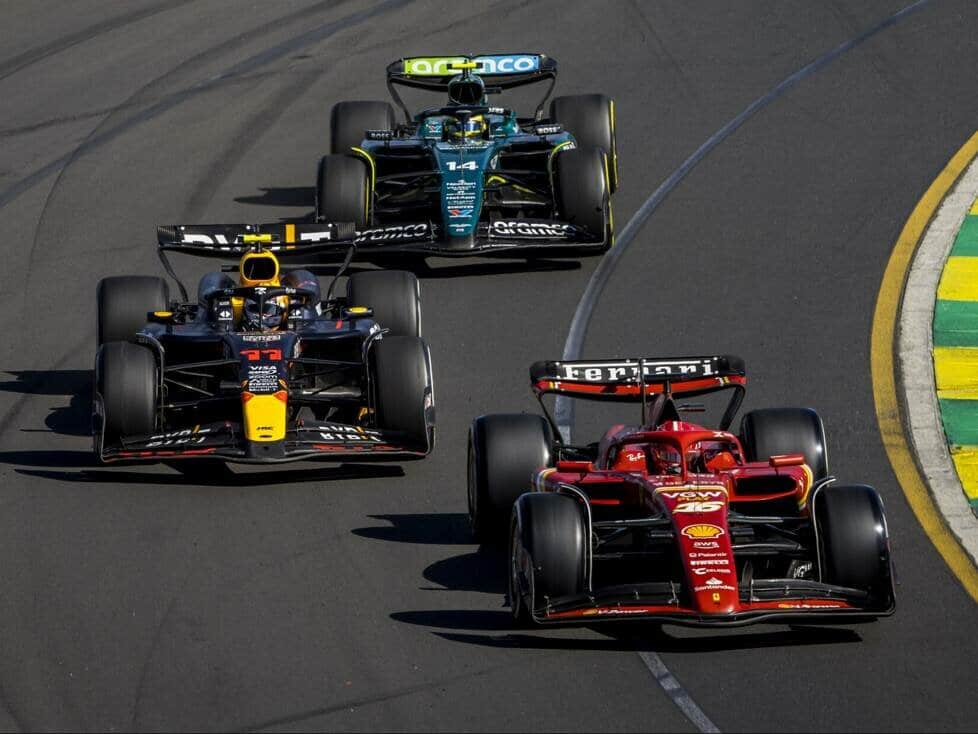Was Red Bull really slower than Ferrari in Melbourne? After the race, it’s clear: Sergio Perez was also underperformed due to a problem
Red Bull was the big loser at the Australian Grand Prix: Max Verstappen retired after just three laps with a burning brake, and Sergio Perez only finished the race in Melbourne in fifth place – almost a minute behind. The Mexican later answered the question of whether Ferrari would have won against Verstappen succinctly: “Absolutely!”
However, on closer inspection, Red Bull was beaten under value. It is impossible to classify Verstappen’s race pace. According to the team, he struggled with the brakes right from the start. And in the case of Perez, it only became clear after the TV broadcasts had finished that his RB20 was also severely handicapped.
When Perez passed George Russell on lap 21, the Red Bull “went like a rocket”, as the Mercedes driver was forced to admit resignedly on the pit radio. Ten minutes earlier, Lewis Hamilton had made a similar comment about Perez’s RB20: “Jesus, they’re fast!” That didn’t sound like Red Bull was inferior.
But then Perez ran into Fernando Alonso on lap 26 and the Aston Martin driver slipped a tear-off foil off his helmet visor. It got caught under the Red Bull behind him “and got stuck in an area of the underbody, where it caused a significant loss of downforce,” reports team boss Christian Horner.
A detail that the Red Bull command post did not even notice during the race. Only when the car was inspected back at the team did the mechanics wonder about the small piece of plastic on the underbody. “That cost us more than 20 points of downforce. And that’s quite a lot,” explains Horner.
This is how fast Perez was until the Alonso incident
Until then, the RB20 was working perfectly. Perez passed Russell on lap 21 and was 4.9 seconds behind Alonso at that point. He closed the gap to the Aston Martin with seven-mile boots, drove into its DRS on lap 26 and made short work of it on lap 27. But: “As soon as he had passed Fernando, the car stopped working properly,” says Horner.
Perez was now fifth and 12.0 seconds behind Lando Norris in the McLaren. But his previously shown speed was suddenly blown away. From lap 27 to his own pit stop on lap 36, Perez was only able to reduce the gap to the McLaren from 12.0 to 10.6 seconds. This was despite the fact that both were on exactly the same tires.
“We drove a long first stint with Checo,” says Horner. “When he fought his way through the field and caught up with Fernando, his pace was just as fast as the leaders.” Until the incident with the tear-off visor. “That shows how sensitive these cars are these days,” sighs Horner.
Horner: Tires have degraded faster
“After that, the tires degraded faster, as we could see at the end of the second stint. That’s unusual for us,” analyzes the Red Bull team boss – who nevertheless remains in doubt as to whether Perez would otherwise have been capable of winning in Melbourne: “It’s hard to say. He was certainly handicapped. Maybe the Ferraris were a bit too fast for him. But who knows?”
In his post-race interviews, Perez had no idea that a tear-off visor had got caught under his car. He put the lack of pace down to poor balance, excessive tire wear and possibly also the asphalt at Albert Park, which he felt was not dissimilar to that in Las Vegas.
Of all things: This is how fast Perez’s race pace really was
However, all the question marks Perez faced can be explained by the limited efficiency of the underbody. Less downforce means less speed, more skidding in the corners and therefore more tire wear. In plain language, this means that it is only possible to assess his race pace up to lap 26.
And all was still right with the world then. Perez had lost a position to Russell at the start, which certainly cost him race time. But on laps 22 to 25, when he had a clear run, he was on average only 0.259 seconds slower than Sainz – even though his tires were already two laps older.
Perez on the left, Sainz on the right: A comparison of laps 22-25, when Perez had a clear run, shows that Perez was not dramatically slower. And this despite the fact that his tires were two laps older (which is about 0.15 seconds). PACETEQ AustralianGP F12024 F1 Formula1 pic. twitter.com/LF2ZK27rtn
– Christian Nimmervoll (@MST_ChristianN) March 25, 2024
The hard tires degraded by an average of 0.146 seconds per lap in Melbourne. In other words, Perez’s speed was only 0.113 seconds slower than Sainz’s in an adjusted comparison, as can be deduced using the OneTiming data analysis tool from PACETEQ. Or, as Helmut Marko puts it: “With Max in the race, the outcome would have been completely different. “





